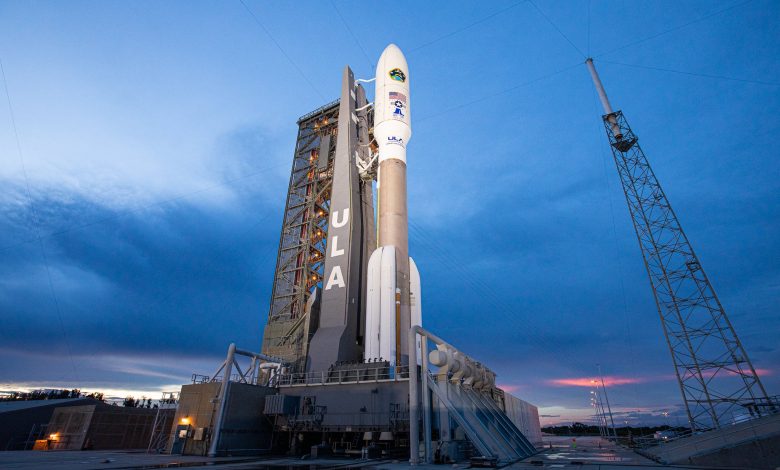
Lead Image: The Atlas V is a “workhorse” for the military. Image Credit: Walter Scriptunas II
United Launch Alliance carried out an Atlas V launch Friday with the third pair of GSSAP satellites for the US Space Force. Flying in its never-before-used 511 configuration, Atlas lifted off from Cape Canaveral Space Force Station at 2:00 PM EST (19:00 UTC) for a lengthy mission that injected the satellites into a near-geostationary orbit.
The GSSAP (Geosynchronous Space Situational Awareness Program) is a US Space Force project using small satellites to inspect other spacecraft operating in geostationary orbit. Friday’s launch, which is designated USSF-8 (US Space Force 8), is carrying the fifth and sixth satellites in this series.
With the deployment of these two satellites, the Space Force is continuing a program which has given them a new capability in recent years to study foreign satellites and monitor their operations in orbit. This likely builds on the earlier experimental MiTEx (Microsatellite Technology Experiment) satellites which performed an array of experiments including satellite inspections during their time in geostationary orbit in the 2000s.
Alongside GSSAP, a series of demonstration missions are being undertaken to further improve the capabilities of so-called “space situational awareness” satellites, including the ANGELS (Automated Navigation and Guidance Experiment for Local Space) satellite that shared a ride to orbit with the first two GSSAP spacecraft, and the Mycroft satellite launched in 2018.
GSSAP satellites are manufactured by Northrop Grumman, formerly Orbital ATK, and are based on the lightweight GeoStar-1 bus. This is a three-axis stabilized platform incorporating the systems that enable the satellite to carry out its mission. Each satellite is powered by a pair of deployable solar arrays and are capable of maneuvering on-orbit to set up inspection passes of other spacecraft.
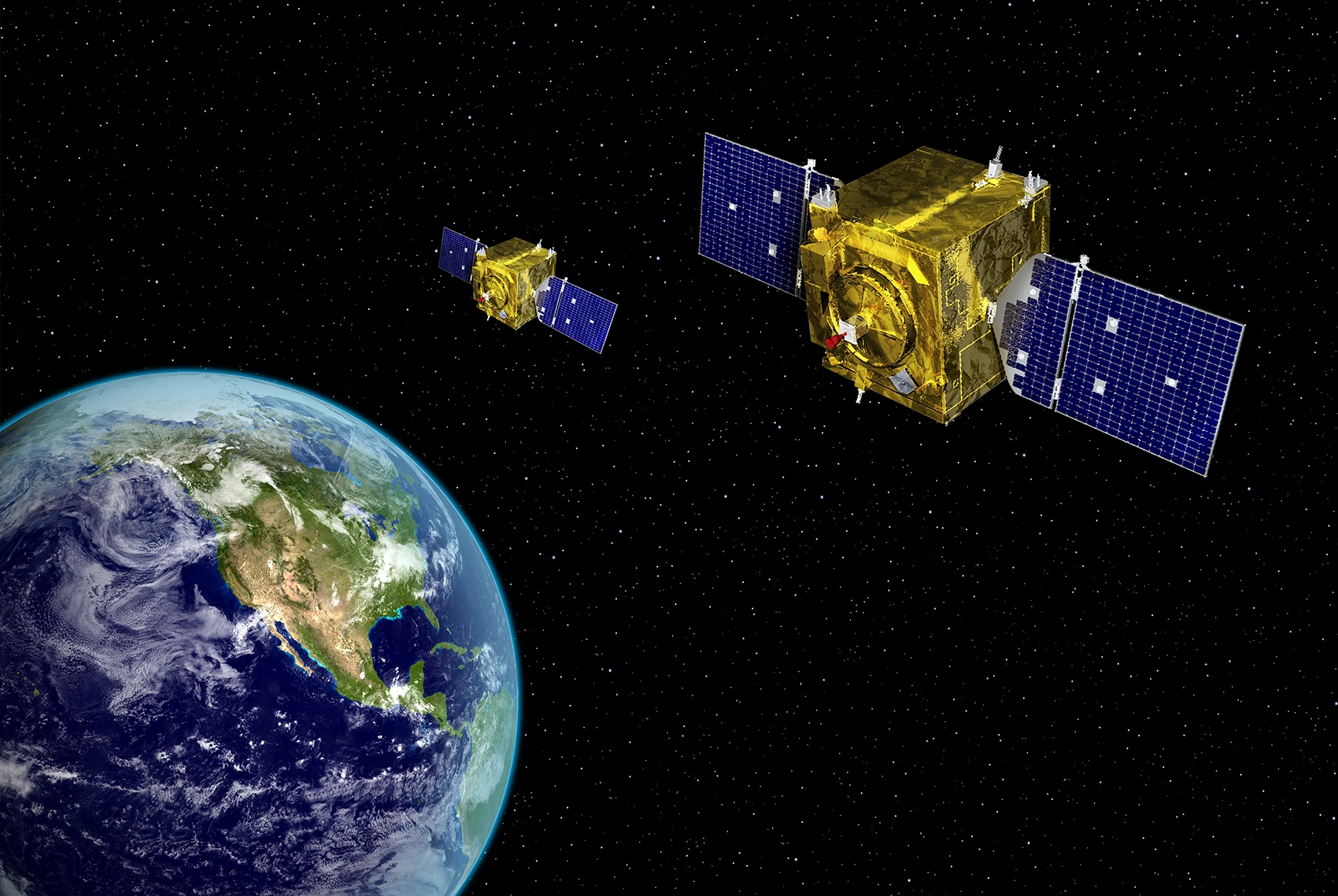
The first GSSAP launch took place in July 2014, designated AFSPC-4 (Air Force Space Command 4). At this point, GSSAP was a US Air Force program, with the formation of Space Force over five years in the future. The twin satellites were carried aloft by a Delta IV M+(4,2) rocket which deployed them and their ANGELS co-passenger, close to geostationary orbit. Another pair of spacecraft were launched by another Delta IV rocket in August 2016 as AFSPC-6. Prior to the program’s transfer to Space Force, the USSF-8 mission was to have been designated AFSPC-8.
The USSF-8 launch comes shortly after the retirement of the first two GSSAP satellites, with GSSAP-1 being decommissioned and moved to a “graveyard” orbit above the geostationary belt around the start of last February. GSSAP-2 joined it in retirement in early October. The arrival of GSSAP-5 and 6 will restore the constellation to four satellites, although it is not clear for how much longer GSSAP-3 and 4 will be able to remain in service as they are only one year younger than GSSAP-1 was when it was withdrawn.
In addition to their own names and their launch designations, the GSSAP satellites in orbit have also been assigned numbers under the series of USA designations given to most US military spacecraft. The first pair were designated USA-253 and 254, while the second pair are USA-270 and 271. USA designations are assigned sequentially, and the most recently-announced example was USA-319, given to the GPS-III-05 satellite launched last June. Assuming no unannounced numbers have been assigned in the meantime, this means that GSSAP-5 and 6 will most likely be given the designations USA-320 and USA-321 once they reach orbit.
Atlas V Rocket
Friday’s launch was carried out by the ULA (United Launch Alliance). Formed in 2006 through the consolidation of the rocket programs of Boeing and Lockheed Martin, ULA has been the premier launch services contractor to the US government since its inception—although this position has more recently come under threat with the advent of SpaceX and other new aerospace companies coming through. ULA inherited Boeing’s Delta II and Delta IV rockets as well as Lockheed Martin’s Atlas V, with the older Delta II being phased out in 2018 and the single-core versions of Delta IV following in 2019.
With these out of service, ULA’s fleet consists of Atlas V and the three-core Delta IV Heavy which will be used for a handful of national security missions with payloads too heavy to be carried by the Atlas V before these responsibilities are handed over to next-generation rockets. United Launch Alliance is developing the new Vulcan rocket, currently slated to make its maiden flight around the middle of this year, as a successor to its Atlas and Delta rockets.
Atlas V and Delta IV were both originally developed under the US Air Force’s Evolved Expendable Launch Vehicle program, begun in the 1990s to replace the fleet of rockets then in service for launching US government payloads: a fleet which included Delta II, Atlas II, and Titan IV vehicles. Atlas V was Lockheed Martin’s design, while Boeing adopted the Delta IV over its own submission following its 1997 merger with McDonnell Douglas. These two designs were the ones taken forward to production, with two vehicles being procured to give assured access to space in the event of one being grounded after a failure.
The Atlas V first flew in August 2002, carrying Eutelsat’s Hot Bird 6 satellite into orbit in a commercial mission contracted by International Launch Services. Friday’s launch marks its 91st flight. It has proven an incredibly reliable workhorse with a near-perfect success record–the only significant blemish coming on its 10th flight back in 2007, when the rocket’s Centaur upper stage cut off a few seconds early due to a faulty valve, leaving a pair of National Reconnaissance Office satellites in an off-target orbit. Despite this, the payloads were able to recover to their operational orbit under their own power.
ULA offers the Atlas V for both government and commercial launches, and the list of payloads that it has launched over the last twenty years includes significant missions for NASA, the US military, and commercial organizations. These have included surveillance satellites for the National Reconnaissance Office; GPS navigation, communication and technology demonstration missions for the US Air Force, and later Space Force and NASA missions which have boosted our understanding of the Earth and the solar system.
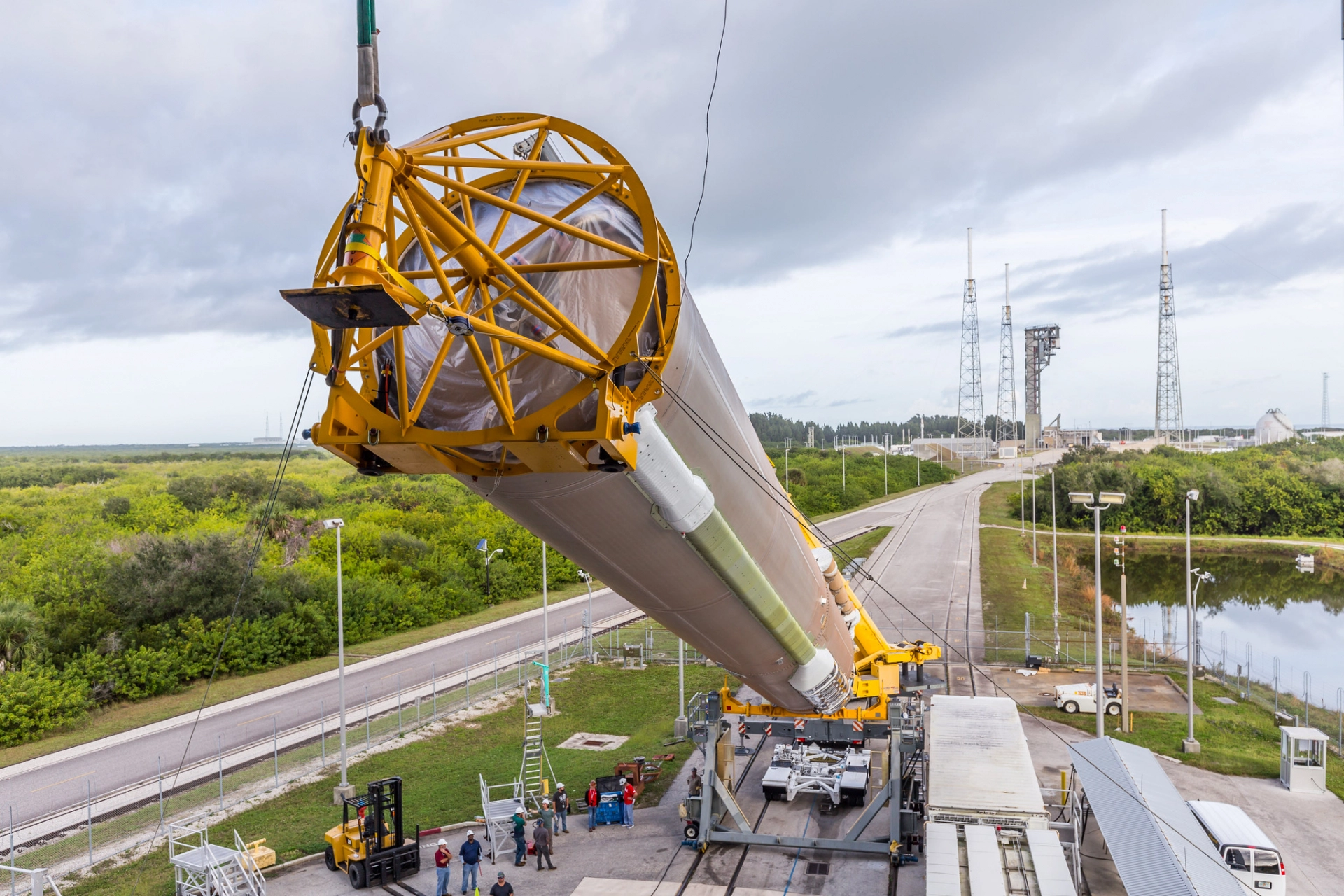
At the heart of the Atlas V vehicle is the CCB (Common Core Booster), which serves as the rocket’s first stage housing RP-1 kerosene propellant and liquid oxygen to fuel its RD-180 main engine. Like Delta IV, Atlas V was originally designed with a Heavy configuration which would have used three CCBs burning in parallel, however this was never taken beyond the drawing board. Instead, all Atlas V configurations that have flown have used a single core, with up to five solid rocket boosters being added to increase thrust at liftoff depending on mission requirements.
These boosters can either be the Aerojet Rocketdyne AJ-60A, which was used on all launches requiring boosters up until 2020, or the Northrop Grumman GEM-63–the latter part of the company’s successful series of GEMs (Graphite Epoxy Motors). Friday’s launch was the third Atlas mission to use the GEM boosters, which are being introduced on Atlas V ahead of their use on ULA’s next-generation Vulcan rocket.
Atlas is a two-stage vehicle, with a Centaur upper stage mounted atop the Common Core Booster to carry their satellites into their final orbits. For Friday’s mission, this was powered by a single RL10C-1 engine, although a variant with two RL10A-4-2 engines is also available and is used in conjunction with Boeing’s Starliner spacecraft currently undergoing testing for NASA’s Commercial Crew program. Centaur burns cryogenic propellant–liquid hydrogen and liquid oxygen–and can be restarted multiple times in orbit. Friday’s launch was carrying a GSO Kit–also known as an Extended Mission Kit–with additional shielding, batteries and propellant for its maneuvering thrusters to enable the lengthy coasts between burns that were necessary to reach the final near-geostationary orbit.
Flexibility has been a key point with the Atlas V, as well as varying the number of boosters and the number of engines on the Centaur upper stage, the size of the payload fairing can also be varied to tailor a rocket to its payload, with two different diameters available and three length options for each diameter. The rocket’s overall configuration is denoted by a three digit number. The first digit indicates the approximate width of the payload fairing in meters, with four and five meter options available. When carrying the Starliner spacecraft, which does not use a payload fairing, an N is given in place of this digit.
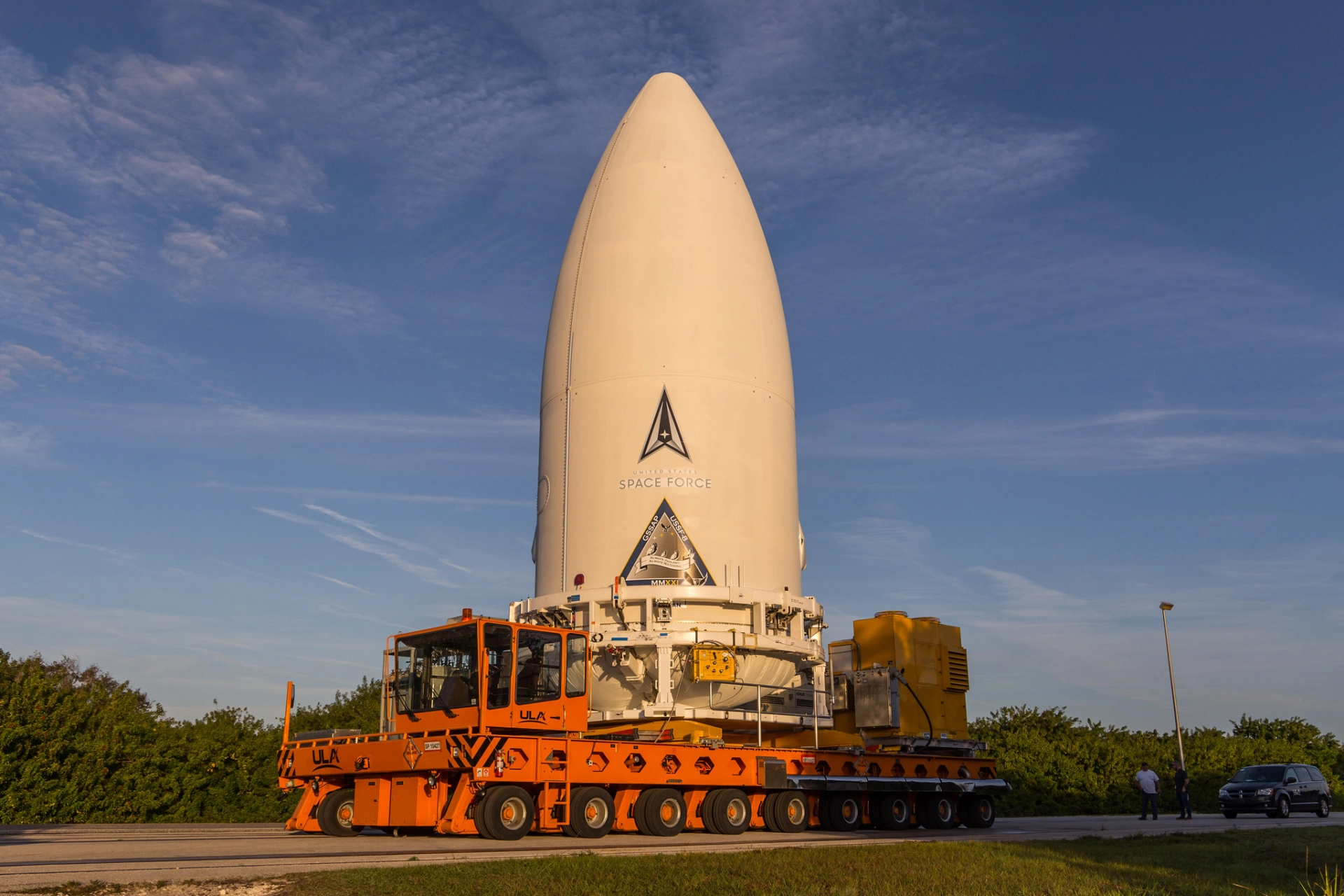
The second digit of the configuration represents how many boosters have been added to augment the first stage, which can be between zero and three when flying with the four-meter fairing and up to five with the five-meter option. The third digit gives the number of engines on the Centaur.
Friday’s launch used the 511 configuration–with a five-meter fairing, one solid rocket motor, and a single-engine Centaur upper stage. This is expected to be the only time Atlas V ever flies in this configuration, which is also the only combination of fairing diameter and booster count that had not yet been flown. In addition to the configuration number, each Atlas V has a tail number which is unique to that individual rocket. For Friday’s launch, this was AV-084.
The five-meter payload fairing is manufactured by Swiss company RUAG and is similar to the one that RUAG developed for the European Ariane 5 rocket. This comes in short, medium, and long variants, with Friday’s launch using the short version. With the five-meter fairing, both the payload and the Centaur upper stage are encapsulated, with the fairing split into a lower half–which encapsulates the Centaur–and an upper half for the payload during pre-launch operations. These are attached prior to launch, and when the fairing separates in flight, it does so lengthways.
USSF-8 Launch
Atlas V can launch from either SLC-41 (Space Launch Complex 41) at the Cape Canaveral Space Force Station in Florida, or Space Launch Complex 3E at the Vandenberg Space Force Base in California. Missions to geostationary orbit must launch from the East Coast, so Friday’s launch was from SLC-41. This launch complex was originally built in the 1960s as part of the Integrate-Transfer-Launch complex for the Titan III rocket, supporting Titan IIIC, Titan IIIE and Titan IV missions between 1965 and 1999.
The complex was rebuilt for Atlas V, initially using a “clean pad” approach with the rocket’s service tower mounted on its mobile launch platform instead of being a fixed structure at the pad. In recent years a tower has been built at the launch complex to provide crew access on Starliner missions, however this is not used for uncrewed launches. As well as Atlas V, SLC-41 will be the home of ULA’s Vulcan rocket which will have its own mobile launch platform to allow the rockets to share the facilities during the transition from Atlas to Vulcan.
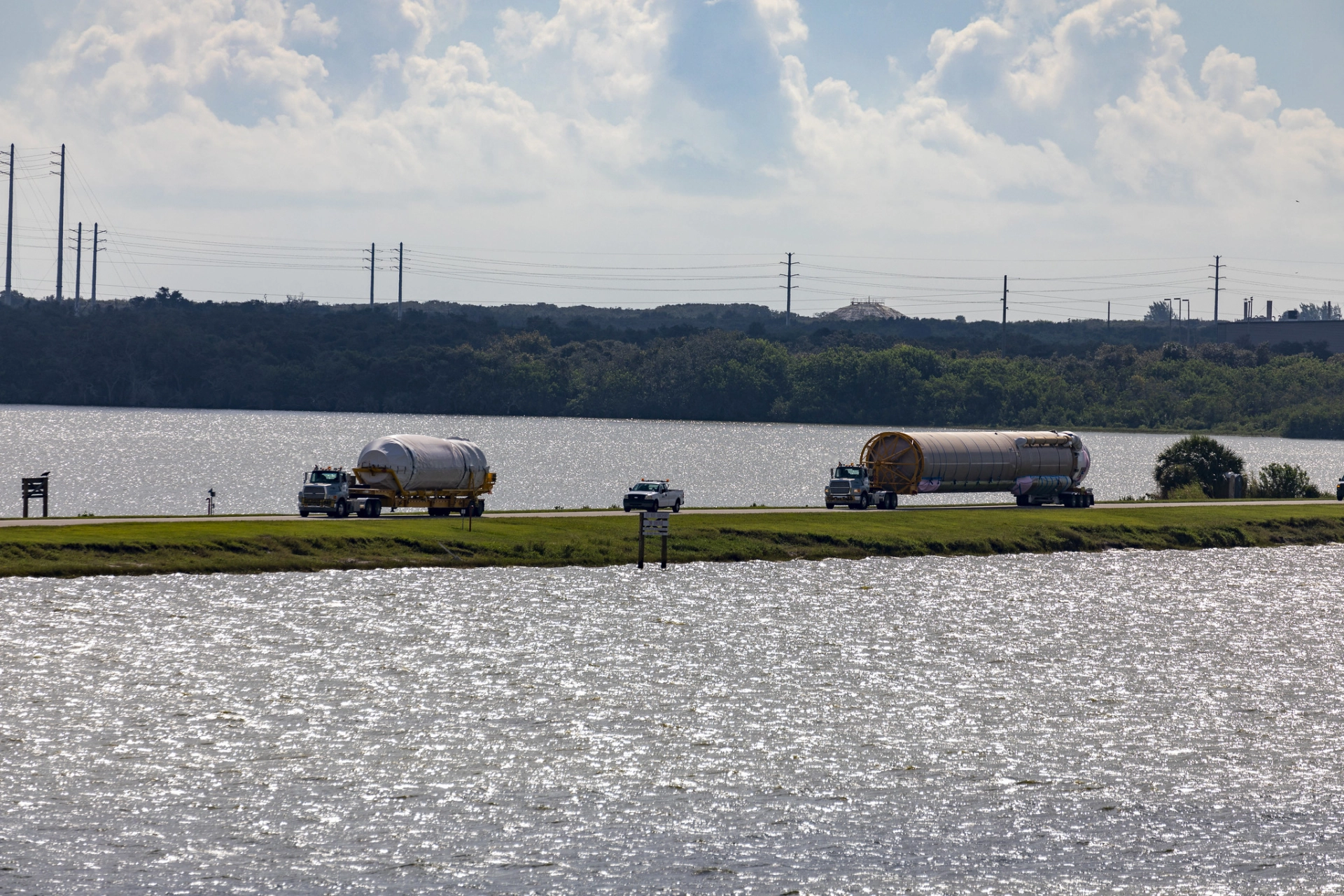
When flying from SLC-41, Atlas rockets are assembled atop the mobile platform in the VIF (Vertical Integration Facility), which is located 550 meters south of the pad. AV-084’s Common Core Booster and Centaur arrived at Cape Canaveral aboard ULA’s RocketShip transport vessel in September 2020, with launch then slated for around March 2021. Various factors resulted in subsequent delays to this date, with the CCB finally arriving at the Vertical Integration Facility on December 18th, less than a fortnight after SLC-41 had been vacated by the previous Atlas V launch with STP-3.
With the CCB mounted vertically on the mobile launch platform, the GEM-63 booster was added on December 20th. Centaur arrived three days later, along with its interstage and the bottom half of the payload fairing–within which the upper stage was already encapsulated. Finally, on January 10th, the GSSAP satellites arrived at the VIF, already encapsulated in the upper part of the payload fairing, and were hoisted atop the rocket.
Atlas, atop its mobile launch platform, was moved from the VIF to the launch pad on Thursday along the rails that connect the two facilities. Following its arrival, final preparations for launch began, including vehicle checkouts and fueling operations–beginning with the loading of RP-1 and continuing with the cryogenic liquid hydrogen and oxygen later in the countdown.
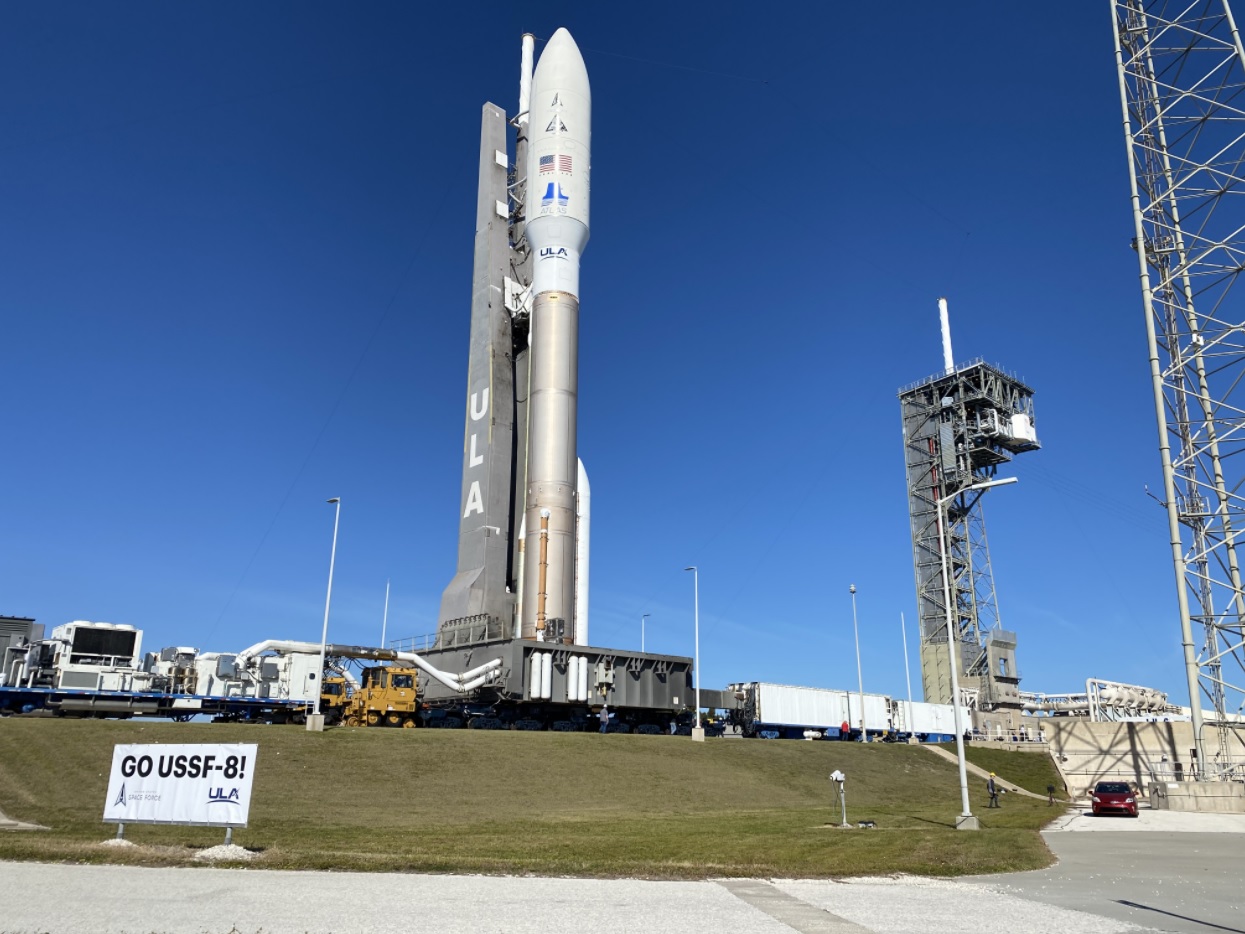
The first stage’s RD-180 engine was manufactured by Russia’s NPO Energomash, and is a two-chamber version of the four-chamber RD-170 developed for the Soviet Union’s Zenit and Energia rockets. It ignited at the T-2.7-second mark in Friday’s countdown with the GEM-63 lighting and the rocket lifting off at around T+1.0 seconds. AV-084 climbed vertically for the first seven seconds of flight as it clears the launch pad, before beginning a series of pitch and yaw manoeuvres to attain the proper trajectory for its journey to orbit.
As the RD-180 and GEM-63 work together to push Atlas through the dense lower regions of Earth’s atmosphere, the rocket reached Mach 1, the speed of sound, after just under 58 seconds of flight. About nine and a half seconds later, Atlas passed through the area of maximum dynamic pressure–or Max-Q–where the increase in aerodynamic stress experienced by the vehicle from its rising speed peaks due to the decreasing density of the air it is passing through.
The GEM-63 booster burnt out about 98 seconds into the flight. Although after this time it was no longer be contributing useful thrust, it remained attached for a few seconds to ensure that when it did separate it do so cleanly without any recontact between itself and the still-burning first stage. The spent booster was jettisoned around the two-minute mark in the mission.
Following separation of the solid rocket motor, the CCB continued to thrust AV-084 towards space. By the three-and-a-half minute mark, Atlas cleared the atmosphere, and its payload fairing was no longer needed to protect the GSSAP spacecraft. This separated down the middle into two sections, falling away and exposing the two satellites to space for the first time. A few seconds later, the forward load reactor–which helps to distribute some of the forces experienced by Centaur to the lower section of the payload fairing–also separate.
Atlas V is standing tall and RP-1 fueling is complete ahead of tomorrow's launch of the #USSF8 mission from Launch Complex 41.
Views from remote setup for @NASASpaceflight pic.twitter.com/YDUh8Jmtqx
— Julia Bergeron 🚢🚀 (@julia_bergeron) January 20, 2022
BECO (Booster Engine Cutoff), the end of the Common Core Booster’s engine burn, occurred four minutes and 21 seconds after liftoff. Six seconds later the rocket staged, with the CCB separating from the Centaur upper stage. Centaur entered its prestart sequence, with its RL10C-1 engine igniting 10 seconds after stage separation. The first of three planned burns for Centaur during Friday’s launch, this lasted eight and a half minutes and see the rocket enter its initial parking orbit.
After coasting in this parking orbit for a little over 56 minutes, Centaur restarted its engine for the second burn. This is a four-minute, six-second firing to reach geostationary transfer orbit. With this completed, the mission entered an extended coast phase as Centaur coasts to the apogee–or highest point–of its orbit. Centaur’s third burn commenced at six hours, 31 minutes and 12 seconds mission elapsed time, lasting one minute and 47 seconds. This circularized the trajectory.
The GSSAP-5 satellite was the first to separate, detaching from Centaur two minutes and 49 seconds after the end of the final burn. Nine and a half minutes later, GSSAP-6 followed. The expected orbit for GSSAP-5’s separation is 36,106 by 36,165 kilometers (22,435 x 22,472 miles, 19,497 x 19,528 nautical miles) at an inclination of zero degrees. For GSSAP-6, the separation orbit’s perigee is about 30 kilometers lower, and the apogee is about two kilometers higher.
Spacecraft separation is not the end of AV-084’s mission, as Centaur will still have to passivate itself to reduce the risk of an on-orbit explosion which could create debris that might be hazardous to other spacecraft. This is particularly important for Friday’s mission as the stage will remain in orbit for the long term and will be orbiting close to the busy geostationary belt. The stage will begin a blowdown about 26 minutes after GSSAP-6 separates. The USSF-8 launch mission will officially conclude at T+7 hours, 46 minutes and 40.3 seconds.
The Atlas V 511 “Big Slider” is full of RP-1 fuel and preparing for liftoff tomorrow at 2pm EST (7pm UTC).
This configuration, with a 5-meter fairing and only one solid, will be flying for the first time for the #SpaceForce’s #USSF8 mission. pic.twitter.com/A94QaWfFk9
— Stephen Marr (@spacecoast_stve) January 20, 2022
The first flight for United Launch Alliance and the Atlas V in 2022, Friday’s launch begins a busy year for both the company and its rocket. The next Atlas V launch is scheduled at the start of March with the GOES-T weather satellite for the National Oceanic and Atmospheric Administration. Other upcoming missions include the long-delayed second uncrewed test flight of Boeing’s Starliner spacecraft–currently expected in May–the NROL-107 “SILENTBARKER” mission for the National Reconnaissance Office, and two launches of missile detection satellites: the operational SBIRS-GEO-6 and the testbed WFOV, the latter of which will be carried as part of the USSF-12 mission.
In addition to its Atlas launches, ULA has a Delta IV Heavy mission scheduled for August with NROL-91 out of Vandenberg. Likely to be a large optical imaging satellite, this will mark the final Delta IV launch from the West Coast. The first flight of ULA’s new Vulcan rocket could also occur during 2022–it is currently scheduled for the middle of the year, but as with any rocket launch and especially the introduction of any new vehicle, this could be subject to change. Vulcan’s debut is expected to carry the Peregrine commercial lunar lander for US company Astrobotic Technology.
